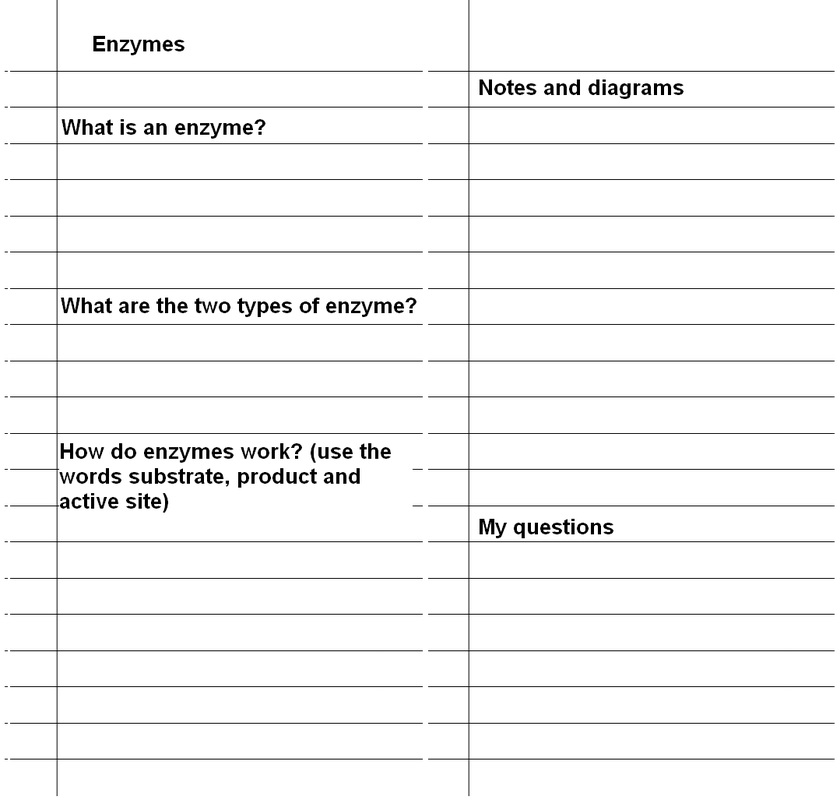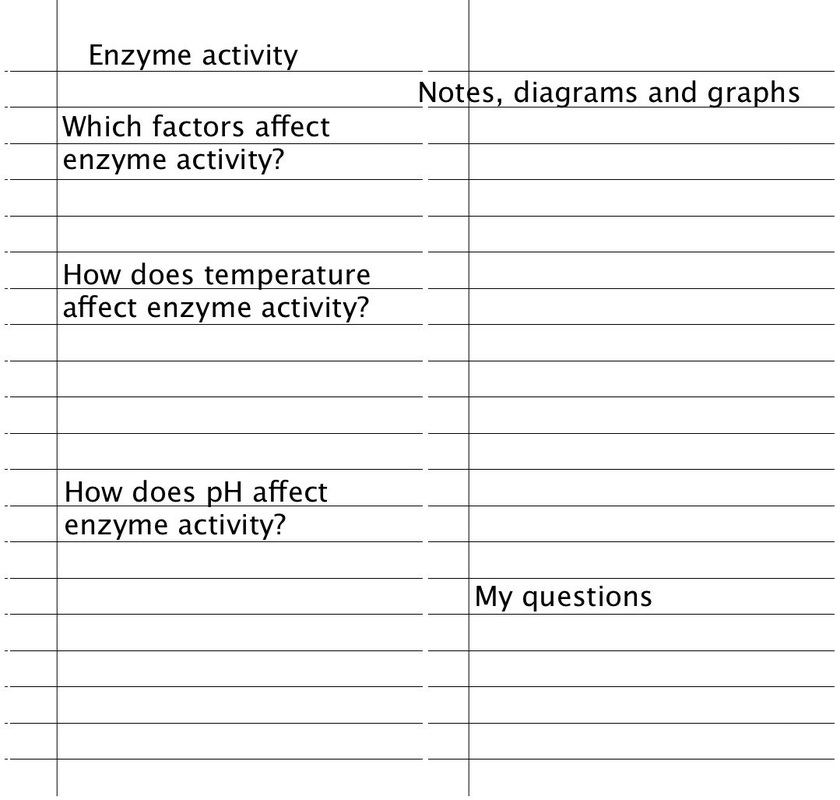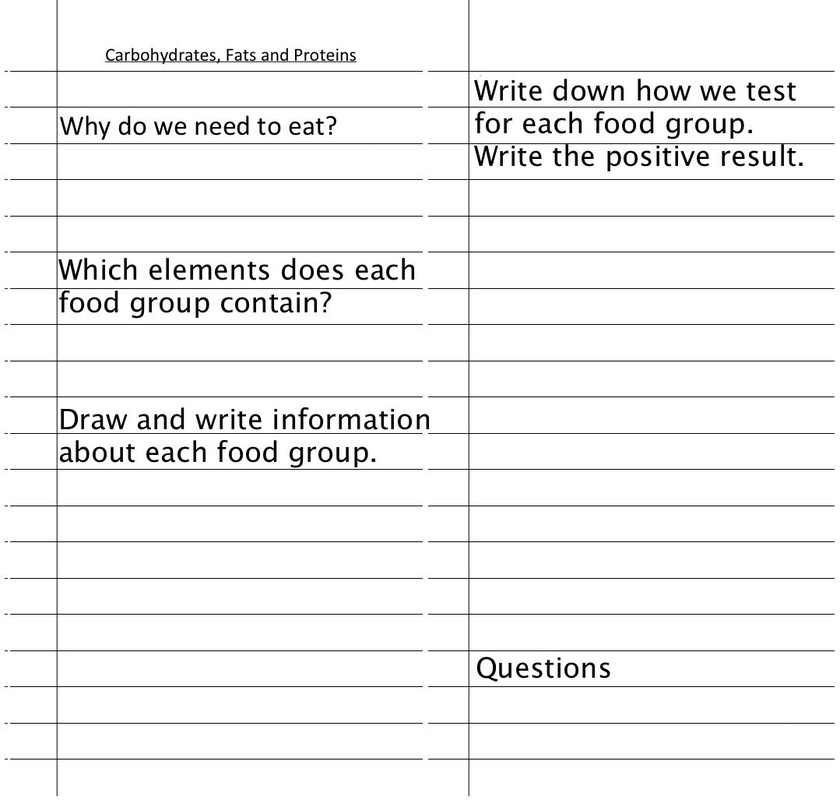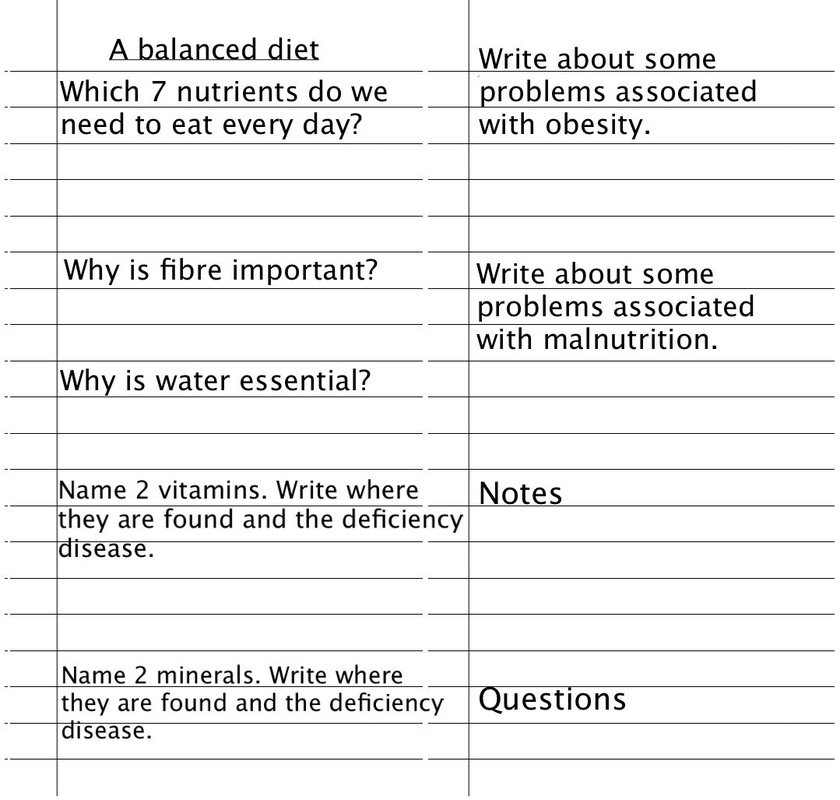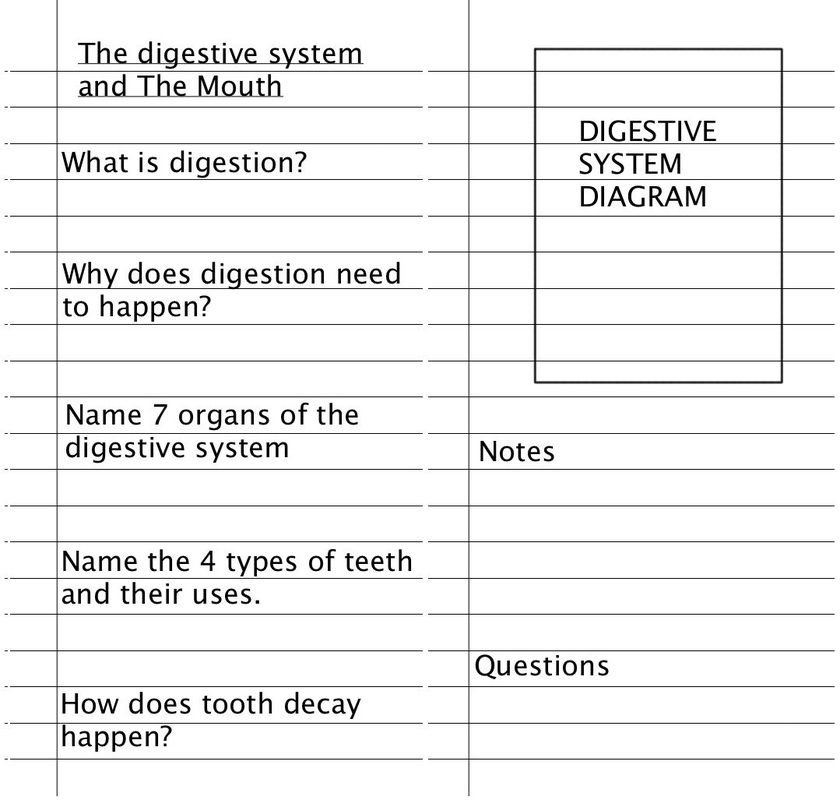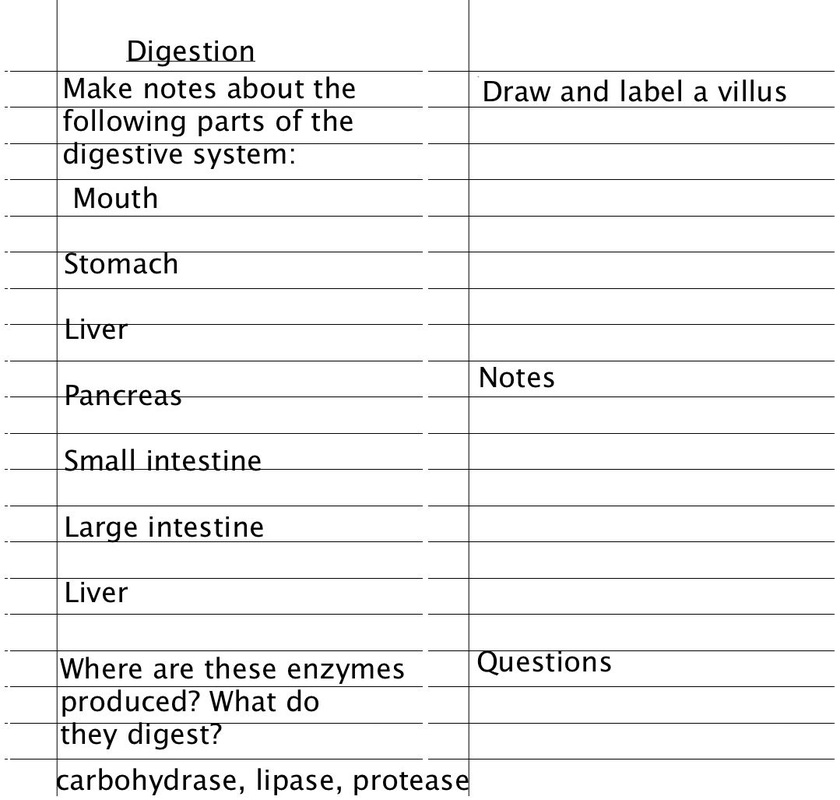IGCSE BIOLOGY
B3 enzymes and B4 HUMAN nutrition
|
This is the third and fourth of the 11 Biology units:
B1. Characteristics of Living Organisms B2. Cells B3. Enzymes B4. Nutrition B5. Transportation B6. Respiration B7. Coordination and Response B8. Reproduction B9. Inheritance B10. Energy Flow in Ecosystems B11. Human Influences on the Ecosystem |
B3 ENZYMES FLIPPED LESSONS
B3 lesson 1: what are enzymes?
Before you start your notebook should look like this:
LESSON 1 VIDEO
B3 LESSON 2: ENZYME ACTIVITY
Before you start your notebook should look like this.
LESSON VIDEO
EXTRA RESOURCES
A cool experiment using Potassium Iodide (it's not an enzyme) as a catalyst for the breakdown of Hydrogen Peroxide.
B4 NUTRITION FLIPPED LESSONS
B4 LESSON 1: NUTRIENTS AND FOOD TESTS
Before you start your notebook should look like this:
THIS LESSON HAS 2 PARTS- YOU HAVE TO DO BOTH
1. VIDEO (FOOD GROUPS)
2. ACTIVITY (FOOD TESTS)
Practise the food tests and make notes from this activity from BBC Bitesize.
B4 LESSON 2: A BALANCED DIET
Before you start your notebook should look like this:
LESSON VIDEO
B4 LESSON 3: DIGESTION AND THE MOUTH
Before you start your notebook should look like this:
LESSON VIDEO
EXTRA RESOURCES
Here is a video about the different teeth animals have with the expert opinion of a vet.
A 23 minute documentary about the Sabre Tooth Tiger. An extinct big cat with MASSIVE canines.
B4 LESSON 4: DIGESTION
Your notebook...
LESSON 4 VIDEO
EXTRA RESOURCES
- Look at the bitesize revision section or try the quiz.
- Have a look at this Prezi:
